
[ad_1]
Tell me if you can relate: Your Pinterest feed is filled with beautiful images of organized pantries and kitchens that feel just a little… too perfect. I can’t be the only one who sometimes looks at her social feeds and wonders if other people don’t cook in their kitchens. Truly: after a productive meal prep sesh and a few days making even the simplest of lunches, I sometimes feel like my kitchen has been *through* it.
With some research, testing, and learning about the layout and organization of my kitchen cabinets and drawers, I realized all that was stressing me out was poor planning and a lack of systems to make my space function as best it could.
When it comes to kitchens, no one’s space looks the same. We approach food differently, so of course, your kitchen setup needs to work for you! Luckily, to get some inside tips that all of us can benefit from, we tapped Ellen Bennet, the founder of Hedley & Bennet and host of Kitchen Glow Up, to give us the inside scoop on how we can most effectively and intentionally approach our kitchen design.

Ellen Bennett
Ellen Bennett is the founder and Chief Brand Officer of Hedley & Bennett, a trailblazing kitchen essentials company. A multi-hyphenate, Ellen balances her roles as business owner, chef, TV personality, home renovator, wife and mother of two.
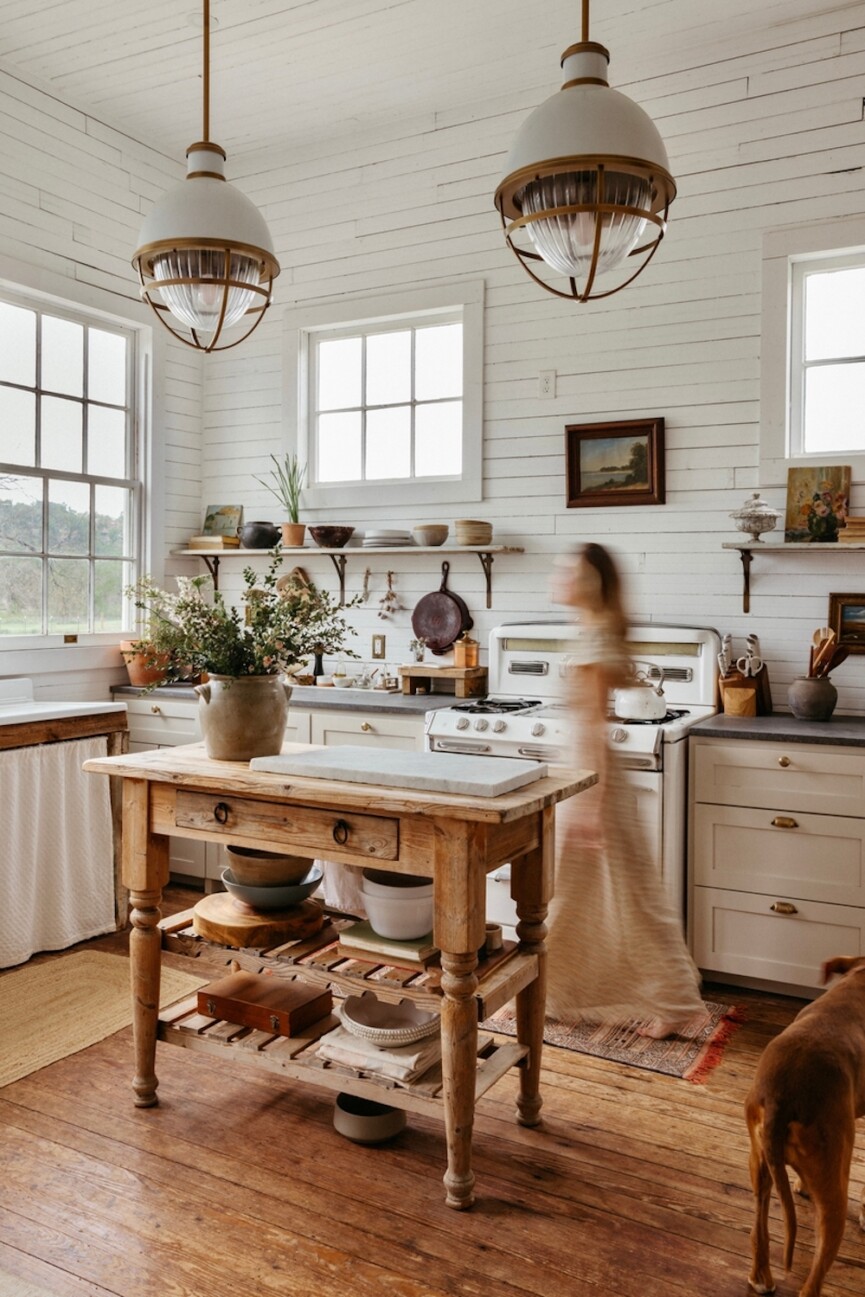
Storage is a key element of the kitchen. What is your approach?
After my kitchen is set up to function at its best capacity, I can start thinking about how to make it look good. In a professional kitchen, the zones include prep, cook, serve, store, and clean. I love to keep that setup in my home kitchen, too. My prep station is always ready on my counter with my giant cutting board and my Hedley & Bennett knife set.
Functionality is the number one priority of my kitchen.
For my storage area, everything has to be easy to find and read the labeling so it’s easy to grab while I’m cooking. I love having two sinks, especially one extra-large one that all-sized dishes can fit into. You might have specific passions that will adjust your stations differently. It’s easy to customize and prioritize these zones and stations while still keeping structure in the kitchen.
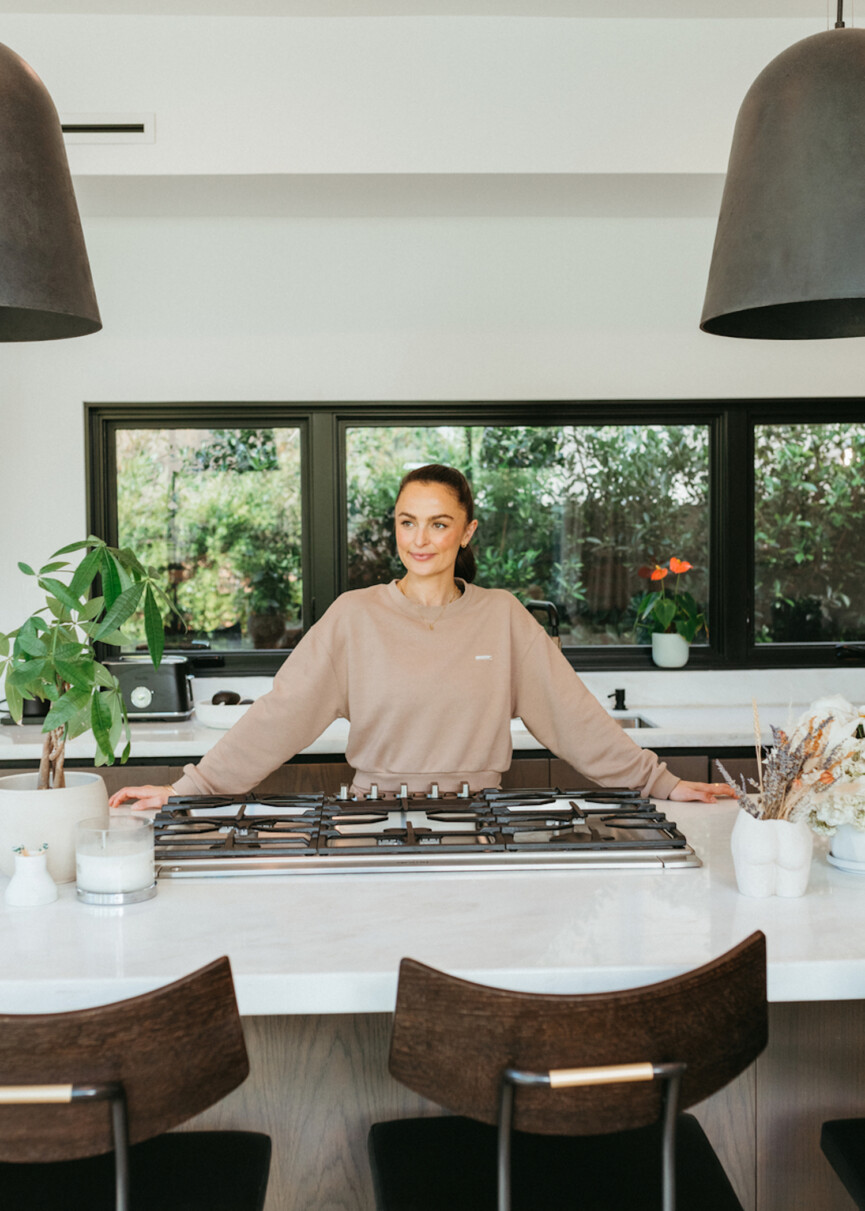
What ingredients do you always keep on hand?
I always have a protein in the freezer: ground beef, ground turkey, or bone-in chicken. Eggs and cans of tuna are other proteins I always like to have on hand. I also have rice in my Zojirushi so there’s always fresh rice going. Avocado is always at the ready and some sort of lettuce or leafy green and pickle in the fridge.
With these ingredients, I can cobble together a rice bowl and customize it based on what else I have on hand. I also always have cooked beans in the fridge. I like to have an assortment of veggies that are easy to steam. For fresh veggies, I have Persian cucumbers that I can easily add to a bowl or eat as I’m running out of the house. I also have onions, shallots, and some kind of citrus to add flavor to whatever dish I’m throwing together. Other staples are olive oil, Fly by Jing’s chili crisp, and good butter. Between all of that, I can make all kinds of things easily.
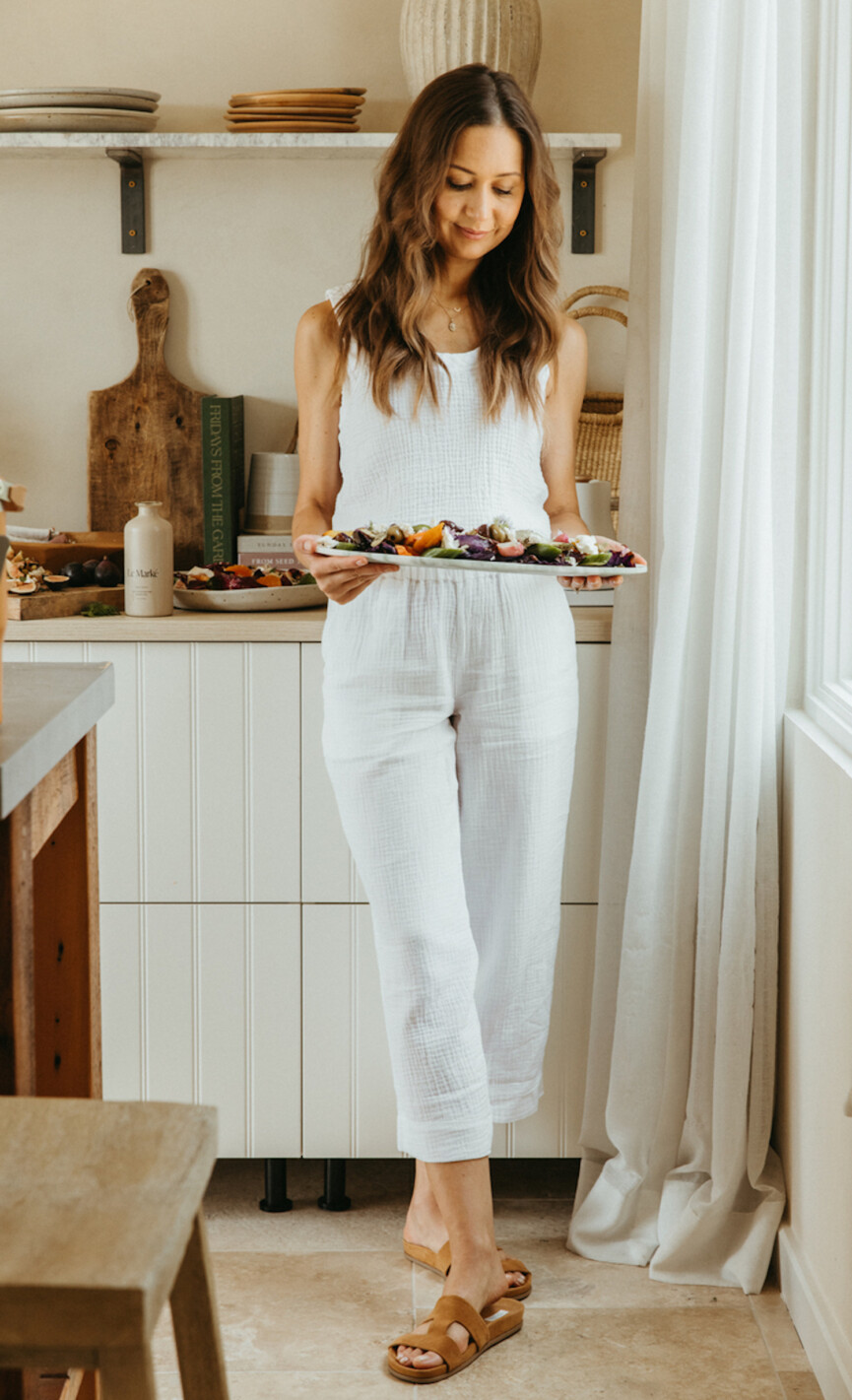
What are your go-to storage tips?
I have clear basket bins on the bottom right part of the fridge that are designated just for veggies. I take all produce out of their packaging and put them on a cloth. This helps avoid moisture and makes them last longer. Clear containers are a must to help me see the items I have in my fridge.
If you can see it, you’ll eat it.
What are your must-have spices?
Peppercorns, Maldon salt, and kosher salt are musts. Diaspora has high-quality, ethically sourced spices. I recommend getting whole seeds of spices when you can. Powders can be pretty old by the time you get them, which makes them lack flavor. If you have the whole seed, you can crush them, grind them, or toast them and it’s much tastier. Botanica has a spice called Magic Spice that’s amazing to have on hand. Garlic powder, sumac, and za’atar are great as well.
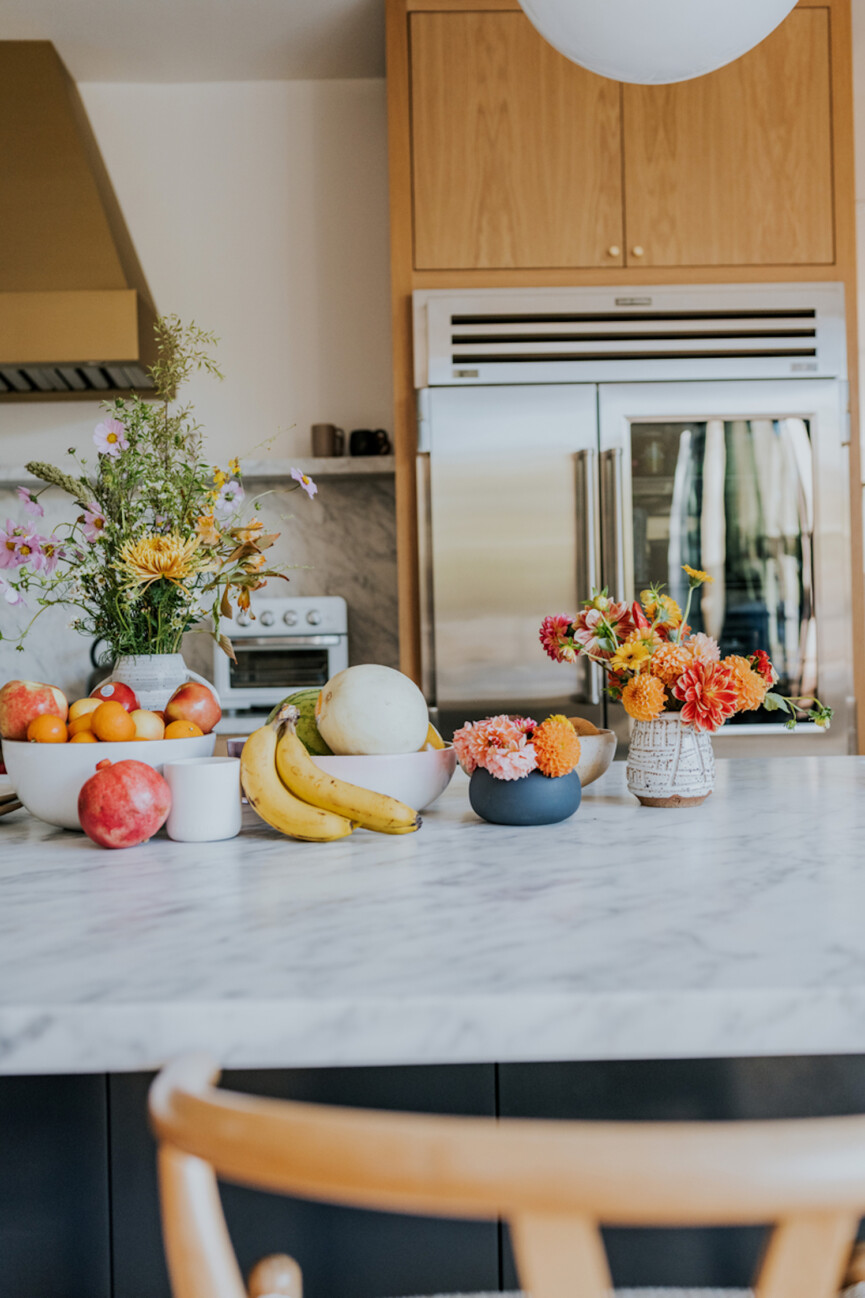
What are your best pantry organization tips?
Stick to one type of container! Don’t have every single thing in the original container you bought it in. You can buy a set of containers on Amazon for dirt cheap. It’s easier on the eye and easier for things not to get lost. If you haven’t used it in the last six months to a year, get rid of it. I tend to land with a bunch of random stuff, so just try and be honest with yourself about the spices you’re going to use and get rid of the rest.
It’s okay to not have every single spice you’re ever going to need for every random recipe you’ll use.
I would also use the same label for all the spices. The more variation you add, the harder it is to look at. Labeling them is important. You can also buy a little museum putty to keep them in place so they don’t move when the drawer gets opened.
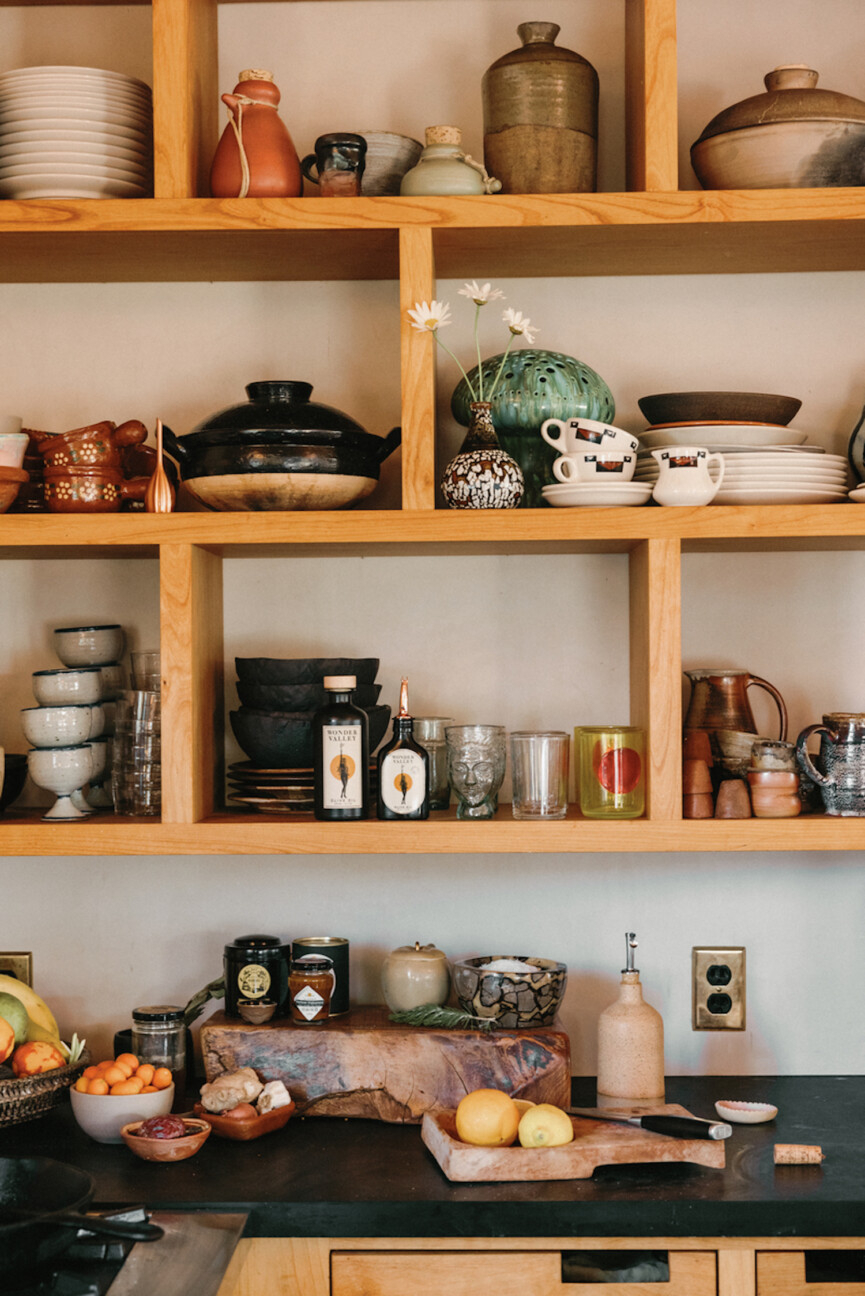
What do you consider kitchen essentials?
I would consider the following to be my kitchen non-negotiables:
- Fish spatula/spatula
- Whisk
- Tongs
- Larger-than-normal spoon that can be used for tasting, serving, and plating
- Microplane/zester
- Set of knives—chef’s, utility, and bread (make sure they’re sharp!)
- A good cutting board and a nice stack of kitchen towels. (Put those towels under the cutting board to hold them in place.)
What specialized kitchen appliances do you think are worth the splurge?
Generally speaking, I’m not a fan of single-use tools. A good tool should be used in more than one capacity. For example, I could use a zester in place of a garlic press. There may be some things on a very specific occasion, such as a cherry pitter if you’re baking a pie, but I generally like to keep these items multi-use.
What have you learned from helping others renovate and reorganize their kitchens?
The power of a dedicated pantry is real because you’re able to look at all the food you have versus not knowing what’s in each cabinet. Having expired foods out of your kitchen is major. People don’t realize how much expired food exists in their lives until they go through and remove it all.
Kitchens are a magnet for random stuff that you don’t need in that space. Give everything a parking spot and it will help you start taking things out of your kitchen that don’t belong there and move those items to its parking spot elsewhere in your home. This will end up giving you so much more space in your kitchen and will impact your daily cooking life and beyond.
[ad_2]